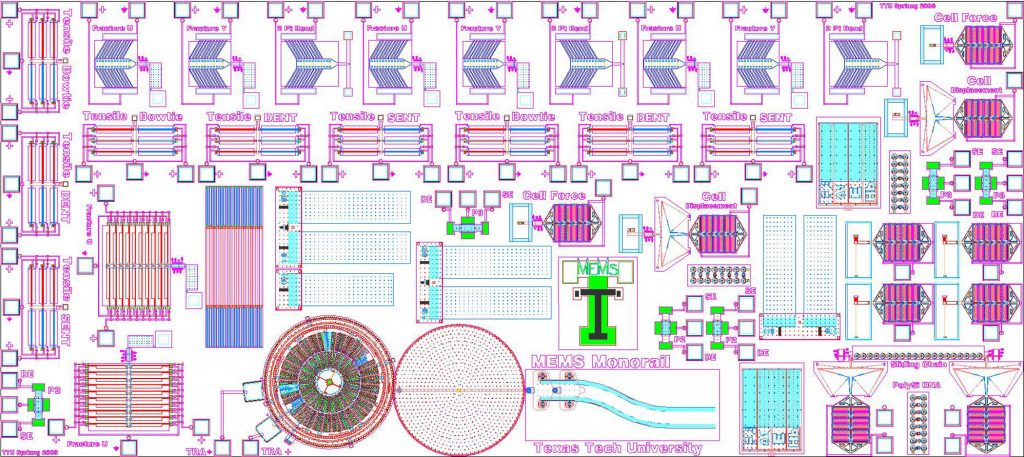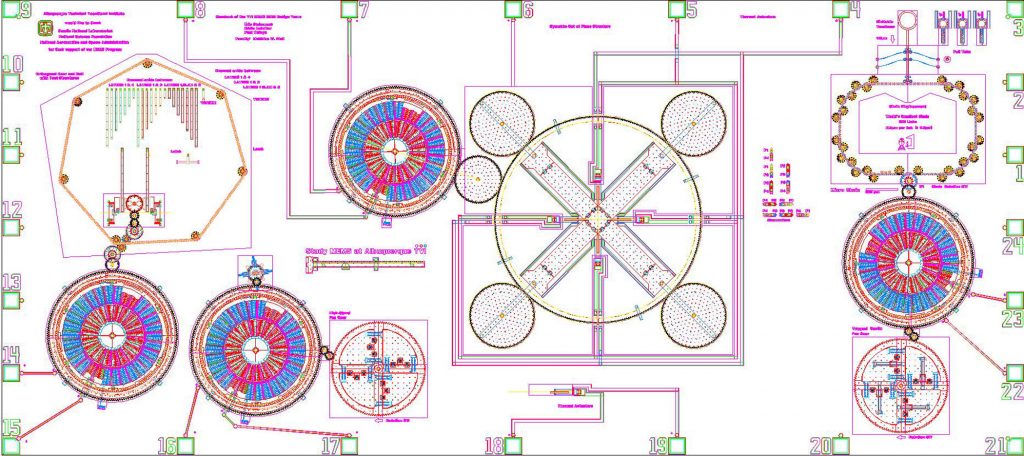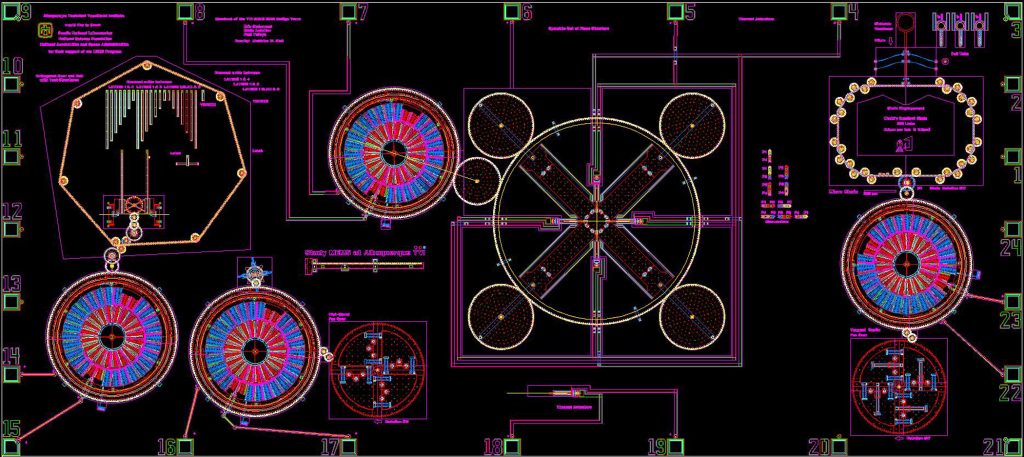
Download 300dpi JPEG image, “ttu_charact_design.jpg,” 412K (Media are welcome to download/publish this image with related news stories.)
ALBUQUERQUE, N.M. — An exceedingly small monorail and a chain with links approximately 1/10 the diameter of a human hair were among the remarkable devices created by the imaginative yet detail-oriented winners of Sandia National Laboratories’ 2006 MEMS University Alliance (UA) Design Competition.
Team representatives from Texas Tech and Albuquerque Technical Vocational Institute (the only two-year school in the competition) were recently informed of their victory. They visited Sandia in mid-May to present their designs for review and to tour Sandia’s microsystem facilities.
Sandia is a National Nuclear Security Administration laboratory.

Download 300dpi JPEG image, “ttu-charactdesign-dark.jpg,” 412K (Media are welcome to download/publish this image with related news stories.)
Among the designs produced by Texas Tech’s winning team were a MEMS (microelectomechanical systems) monorail and a method to mechanically characterize bio-cells.
“The Sandia Design Competition is the centerpiece of our MEMS curriculum. We believe the educational benefits are excellent,” said Professor Tim Dallas, who, along with student Jay Friend, led the effort that won the Characterization/Reliability/Material and Surface Science category.
Dallas praised the Sandia-originated SUMMiT design process, said it allowed students to participate in interesting research, and hoped that “testing and characterization of the fabricated devices will lead to publishable results.”

Download 300dpi JPEG image, “tvi-noval-design.jpg,” 412K (Media are welcome to download/publish this image with related news stories.)
Professor Matt Pleil and student Paul Tafoya from Albuquerque TVI won the Novel Design category with help from students Eric Steinmaus and Eddie Letellier. (TVI will soon be renamed Central New Mexico Community College.)
The group built what it believes is the world’s smallest chain (11 microns per link — the average width of a human hair is 70 microns), complete with tensioner, as well as a microbelt able to transfer energy from one point to another. They built orthogonal gears necessary to transfer power from one plane to another (as in transferring power from transmission to wheels) and a trapped-oxide actuator that uses internal stresses to cause the structure to lift out-of-plane.

Download 300dpi JPEG image, “tvi-noval-design-dark.jpg,” 412K (Media are welcome to download/publish this image with related news stories.)
“Not only did students learn details but also how important design is to the final fabrication of the product,” said Pleil. “They worked many hours on their own time to fine-tune their work. They also had a lot of fun and turned into a tremendously cohesive team. We greatly appreciate the outstanding support we have received from Sandia.”
The project has been a model for other community colleges, says Pleil, and has been presented at a local high school to stimulate interest in science. It’s also been presented at a number of technical meetings and conferences.
“The ingenious designs submitted by all the participants in this competition are evidence of our success,” says Harold Stewart, Sandia manager and contest lead.
The two schools will receive organizational memberships to MANCEF (Micro and Nanotechnology Commercialization Education Foundation). The winning designs will be fabricated on Sandia’s SUMMiT V™ reticle set and Sandia-fabricated parts will be shared with all University Alliance members to use in their curriculum, regardless of participation in the 2006 contest.
Institutions must be members of Sandia’s MEMS University Alliance for their students to participate. Membership is available to any US institution of higher learning. Members receive course materials structured to help start or further develop their own MEMS program. They also receive licenses for Sandia’s cutting-edge MEMS design software, MEMS parts, and other benefits. Twelve schools are members of the Alliance with a number of agreements pending.
The contest attempts to help attract, inspire, and train US students to become the engineers and scientists of the next generation of the MEMS workforce, according to literature published by the program. Cost-effective programs that build relationships with US students and professors help foster US leadership and competitiveness in a globalized world, the literature says.
This is the second year of the design competition. Greater detail can be found at http://www.sandia.gov/mstc/education/design-contest/index.html.
For more information about the contest, contact Natasha Bridge at nabridg@sandia.gov.
For more information about becoming a member of the University Alliance, contact Kathryn Hanselmann at kdhanse@sandia.gov